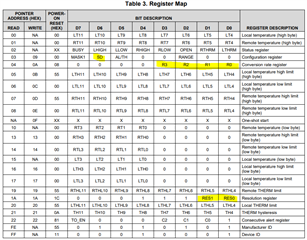Hi,
I'm working on custom board that has TMP401 temperature sensor connected via I2C.
I have embedded linux installed on my board that utilises "tmp401.c" driver.
The temperature is sampled correctly without any problems.
The issue i'm struggling with is regarding to the sample time.
From measurements i made it takes about 14[ms] to get the result from the sensor.
When i dived down to datasheet i discovered a cool feature that called "High speed mode" , that can works in 2.5[MHz].
I didn't yet figured out how to use this mode and how should i use it.
In the datasheet is mentioned to send through the I2C bus the following master code :"0x0000 1xxx" , but the context is missing for example:
To which register i should write the value, what is the sequence when using this mode.
Thanks for granted,
nati


